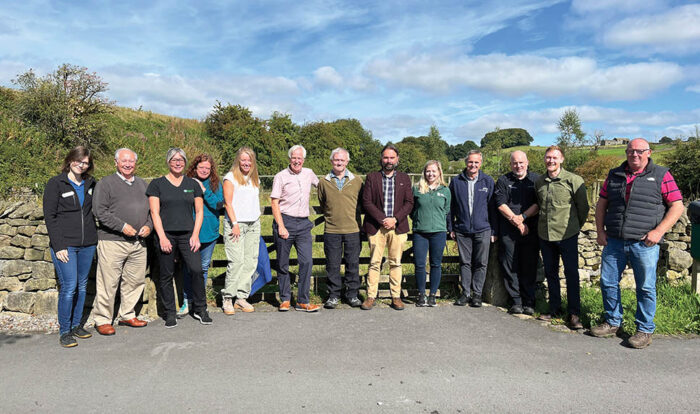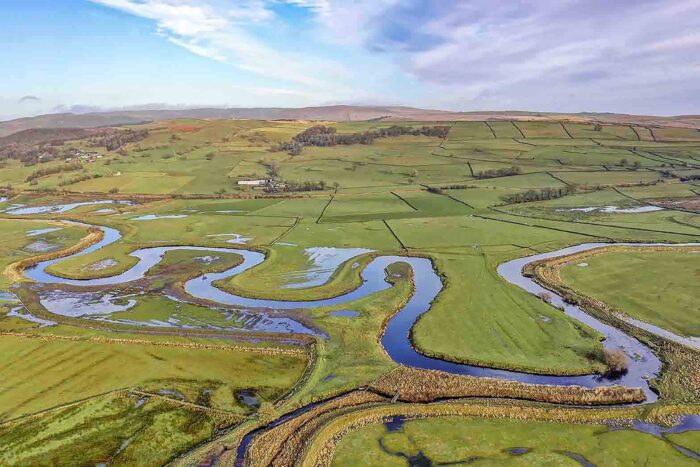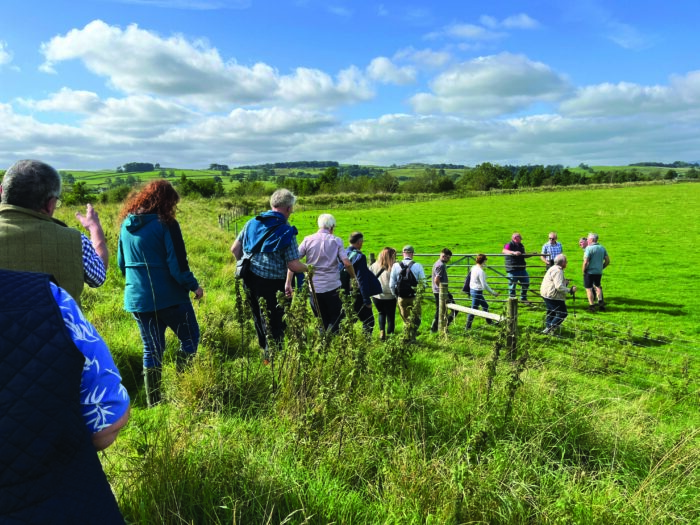Celebrating 20 years of floodplain conservation at Long Preston
December 4, 2024
This September YDMT celebrated 20 years of floodplain conservation through the Long Preston Floodplain Project, marking two decades of collaborative work to naturalise the river, restore wetland habitats and promote sustainable farming on the Ribble floodplain.

Long Preston floodplain, an area rich in history and nature
Nestled between the Yorkshire Dales and Forest of Bowland, the Long Preston floodplain is a unique wetland area, with 165 hectares of the floodplain designated as a Site of Special Scientific Interest (SSSI).
The floodplain is important for farming, rich in history and a priority habitat for wading birds and rare flora. At the peak of the season, the area can be home to up to 2,500 birds, of which 47 species on the UK Birds of Conservation Concern Red List have been recorded. These include curlew, lapwing, grey partridge, Bewick’s swan, pochard and hen harrier, as well as skylark, greenfinch, tree sparrow and house sparrow.

Highlights from 20 years of floodplain conservation
Over the last 20 years the Long Preston Floodplain Project has delivered some impressive practical works to restore hundreds of hectares of farmed land into thriving wetland habitat – with funding from a variety of different sources. It’s success is built on genuine trust and collaboration between multiple agencies, with the farmers at its heart.
More than 50 partners involved in the creation of Long Preston Floodplain Project attended an event at Lords Courtyard, Settle to reflect on the achievements of the last twenty years. During this time:
- 190 hectares of farmed land have been restored to thriving wetland habitat. This includes flood embankment realignment and the creation of ponds.
- In some areas the river is reconnecting with the floodplain and moving more naturally as a result of setting floodbanks back.
- Historical weirs have been removed to restore natural river processes, allowing migrating fish to move freely through the river.
- 16 habitat creation schemes were completed in 2022, covering 10.5 hectares of land on the floodplain. This included small wildlife habitats, riparian woodlands and hedgerows.
- The aqueduct on Wiggleworth beck has been restored as well as the creation of a pond alongside the Ribble Way.
- Over 18 years of bird counts have been undertaken with 212 species recorded – demonstrating how special the area is for breeding, passage and wintering birds.
Memories of the floodplain
Anthony Bradley, who farms in the area and is a member of the Ribblesdale Farmers Group, said:
“Dad was alive when the first stirrings started of this project. He was a bit of a ‘twitcher’ and I well remember his delight when kestrels reappeared and nested on the top of a ruined barn. The real success though is the genuine cooperation and mutual respect between both farmers and non-farmers.”

The future of the floodplain
In 2024, the Long Preston Project partners agreed a new ambitious strategy with the dual aims of providing catchment-scale habitat restoration and supporting sustainable farming.
A new evidence-driven habitat restoration Master Plan is currently being developed with project partners and landowners to identify opportunities for landscape restoration across the whole of the Upper River Ribble Catchment.
Learn more about our work on the Long Preston Floodplain






